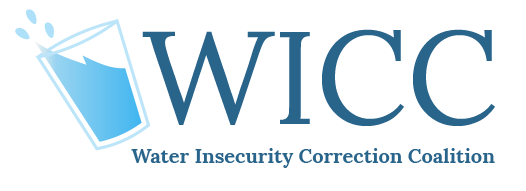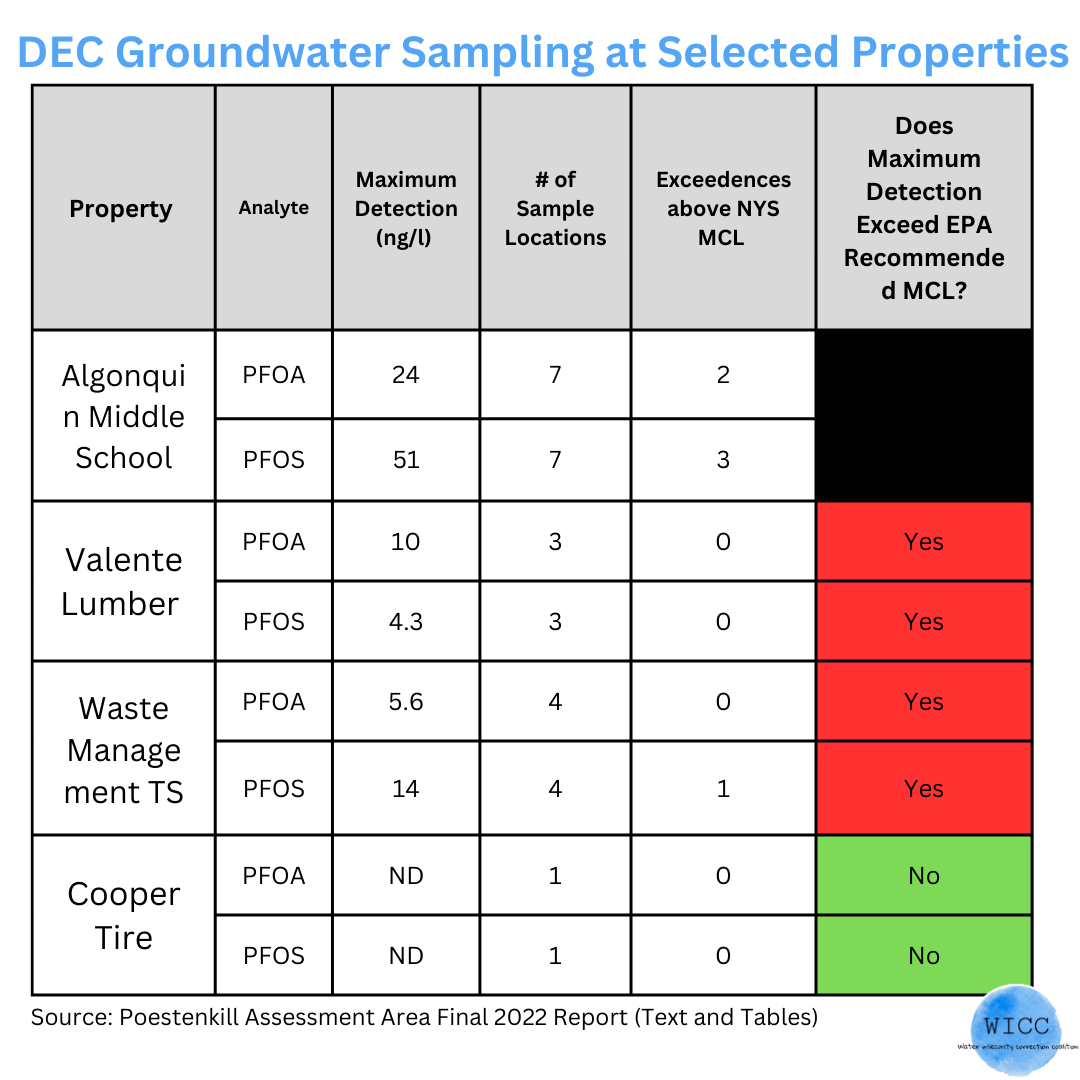POESTENKILL, N.Y.—The NYS Department of Environmental Conservation (DEC) today released the final community update on the status of PFAS contamination in Poestenkill.
Based on 18 months of data collection, the DEC reported that “no industrial source” is to blame for the PFAS contamination of local water supplies. The DEC assessment suggests that there “is not an individual, unique source of PFAS” in Poestenkill but rather “multiple low-level contributors, including PFAS from consumer goods that is transferred through domestic wastewater.”
In the report, DEC said that the elevated levels of PFAS found at Algonquin Middle School and surrounding properties are attributable to “the geologic conditions… conducive for surface water and shallow groundwater to mix with the deeper aquifer zone, which currently serves as the school’s drinking water supply.” The assessment concludes that the highest concentrations of PFAS were found along the “down gradient side of the Algonquin Middle School septic,” the groundwater equivalent of downstream.
The assessment explains further that “groundwater contamination that is diffuse and not shown to be emanating from a known commercial or industrial source is not amenable to conventional source treatment,” meaning that they do not attribute Poestenkill’s high levels of PFAS to one culprit and suggest a less conventional solution to the problem. However, DEC ultimately concludes that “remedial action is not warranted.”
DEC and the Department of Health (DOH) subsequently claim that the best solution to Poestenkill’s PFAS problem is encouraging the affected area to switch to a “public water” system, alluding to the new water district that will be surrounding Algonquin to connect households that currently rely on private well systems.
As for private well testing, DEC informs residents that “investigation findings suggest that PFAS detections in private wells are likely emanating from non-point sources of wastewater” and that testing of resident wells will not continue.
Though a single source of contamination might have been anticipated, the report suggests that “multiple low-level sources of PFAS” are the cause of the town’s PFAS contamination. At Algonquin in particular, DEC suggests that “wastewater is the most likely source of PFAS contamination in groundwater serving as the school’s drinking water supply,” though with the caveat that “the many product types and potential industrial sources of PFAS contamination [means] confirming domestic wastewater as a source requires multiple lines of evidence.”
To find a source, DEC collected water and soil samples from Hass Manufacturing, a former car wash site, Valente Lumber Yard, Cooper Tire, and the Waste Management Transfer Station. PFOA and PFOS concentrations in groundwater above the EPA’s recommended 4 parts per trillion (ppt) were found at Valente Lumber Yard and the Waste Management Transfer Station. A soil sample collected at the former car wash property tested above the PFOS soil guidance value for residential use.
“I hope there is some relief for Poestenkill residents to have a final assessment on the PFAS problem in their town,” said Annabel Gregg, WICC Founder and Project Lead for the organization’s Upstate Water Contamination Project. “I understand why the DEC screened samples using New York State’s Maximum Contaminant Level of 10 parts per trillion. How would they know that the EPA would suggest more stringent standards in the last few months? Regardless, given the timing of this report, I urge Poestenkill residents to read the full assessment. There were, despite DEC’s acquittal of them, commercial sites investigated that showed PFOA and PFOS concentrations above the EPA’s proposed new MCL and even approaching 10 parts per trillion. Multiple sources being responsible certainly seems plausible, but next steps for addressing that are missing from the report.
“The EPA has warned us that any amount of PFAS exposure could lead to negative health outcomes. For the sake of the community, the logical next step after this report is to promptly secure funding to build the new water district and get residents connected to safe, uncontaminated water as quickly as possible. But I encourage residents to keep paying attention to their water safety.”
The final assessment comes two weeks after Poestenkill Town Supervisor Keith Hammond commented that the delay on the report could be attributable to “parties involved” that were unhappy with the conclusions of the report.
“Some of them are upset with the report, but it’s done,” Hammond said at the April 13 Town Board meeting. “There are people that are involved that don’t want it out at all.”
The latest known surface and groundwater sampling results (prior to the final update) from these properties can be viewed using Water Insecurity Correction Coalition (WICC)’s Poestenkill PFAS Interactive Map. WICC will be reviewing the final report’s sampling data and subsequently updating the map in the coming days for ease of public access.
To answer resident questions and share their findings, DEC, DOH, and the Rensselaer County Department of Public Health (RCDOH) invite community members to attend their “Availability Session” at Algonquin Middle School on Thursday, May 18 from 5:00 to 8:00 PM.
At the availability session, DEC, DOH, and RCDOH experts will staff tables featuring information about the various aspects of the investigation and response, providing opportunities for local residents to ask questions of experts one-on-one.
“We are happy that DEC has given the public an update, the first in almost 12 months. Our members are reviewing the update and will be meeting to discuss,” the Concerned Citizens for Clean Drinking Water (CCCDW), an ad-hoc group of Poestenkill residents formed in response to the PFAS problem, told WICC in a statement on Wednesday. “In addition, we believe the announced May 18 ‘Open House’ falls short of what is necessary given the nearly two-and-a-half-year investigation into PFAS contamination in the Algonquin Middle School neighborhood and strongly urge a formal presentation to the community so that we can hear their conclusion at the same time.” The group also emphasized that the Town of Poestenkill should reschedule the May 11 public hearing on the water district to be moved until after the DEC holds its Open House.
The Environmental Protection Agency (EPA) warned this year that any amount of PFOA or PFOS exposure could harm human health. Just last month, the EPA recommended that states lower their current Maximum Contaminant Levels (MCL). New York State’s MCL is 10 parts per trillion (ppt), and the EPA now recommends 4 ppt. Investigation into Poestenkill’s contamination began after routine water monitoring revealed PFOA concentrations above 12 ppt at Algonquin Middle School in January 2021.
The April 26 Community Update can be read here, and DEC’s Final Assessment can be accessed here. Other information on DEC’s investigation into Poestenkill can be found on their webpage.
Water Insecurity Correction Coalition, Inc. is a youth-led nonprofit organization based in New York focused on eradicating water insecurity in all forms nationwide. WICC’s Upstate Water Contamination Project is a two-pronged advocacy and citizen science program focused on road salt contamination in the Adirondacks and Poestenkill’s PFAS contamination.



